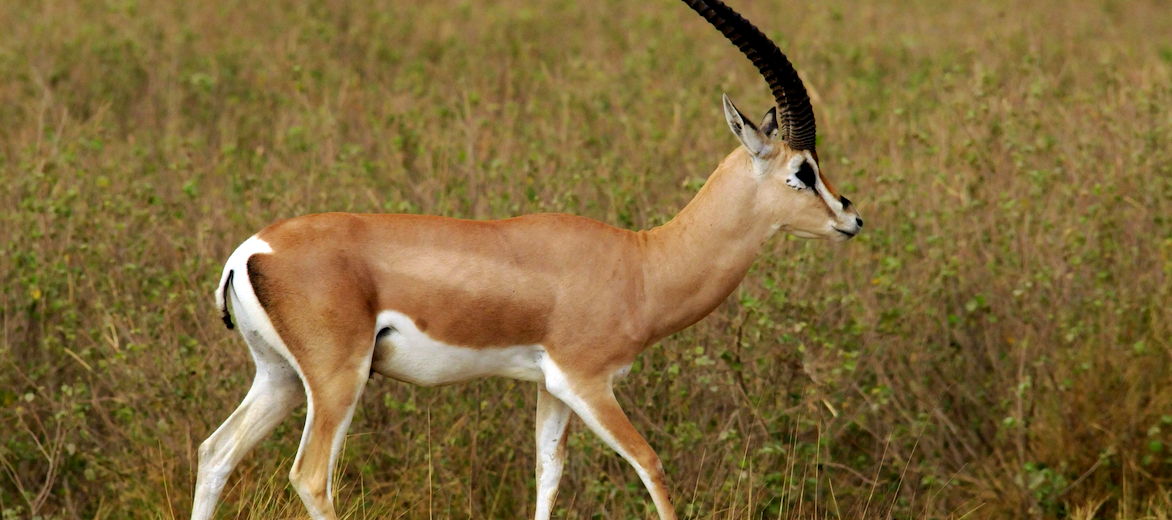
The Grant’s gazelle can be found in Sudan, Somalia, Tanzania, Ethiopia, Kenya, & Uganda. Grant’s gazelles inhabit arid areas like savannas, open plains, and semi-arid deserts. The number of Grant’s gazelles is dropping as a result of habitat loss due to increased agriculture and people hunting them for their meat and horns. For now, they are listed as Least Concern, but their population is decreasing.
First the Stats…
Scientific name: Nanger granti
Weight: Up to 145 lbs
Length: Up to 5.5 feet
Height: Up to 3.1 feet
Lifespan: Up to 12+ years
Now on to the Facts!
1.) Males and females have S-shaped ringed horns that can reach 18 – 31 inches long.
2.) These undulates (hooved animals) are herbivores (eat plants) that feed on various leafy plants and grasses.
3.) The Grant’s gazelle is very drought tolerant and can sustain it’s need for water by the plants it eats.
4.) Grant’s gazelles typically feed at night, when the dew is higher on the grasses they consume.
5.) They travel long distances to find food and water, like many other hoofed animals of Africa. This migration takes place typically during the dry season.
But wait, there’s more on the Grant’s gazelle!
6.) Cheetahs and African wild dogs are the main predators of these gazelles.
7.) Males are only territorial during the mating season.
Did you know…?
The Grant’s gazelle can run up to 50 mph!
8.) Male gazelles use feces (poop), urine, and scent from the glands in their face, groins, knees, and feet to mark their territory.
9.) A grant’s gazelle can jump up to 10 feet to escape predators!
10.) Groups or herds can consist of up to 100 individuals; both males and females.
Now a Short Grant’s Gazelle Video!
Also, check out the Critter Science YouTube channel. Videos added frequently!
Want to suggest a critter for me to write about? Let me know here.



